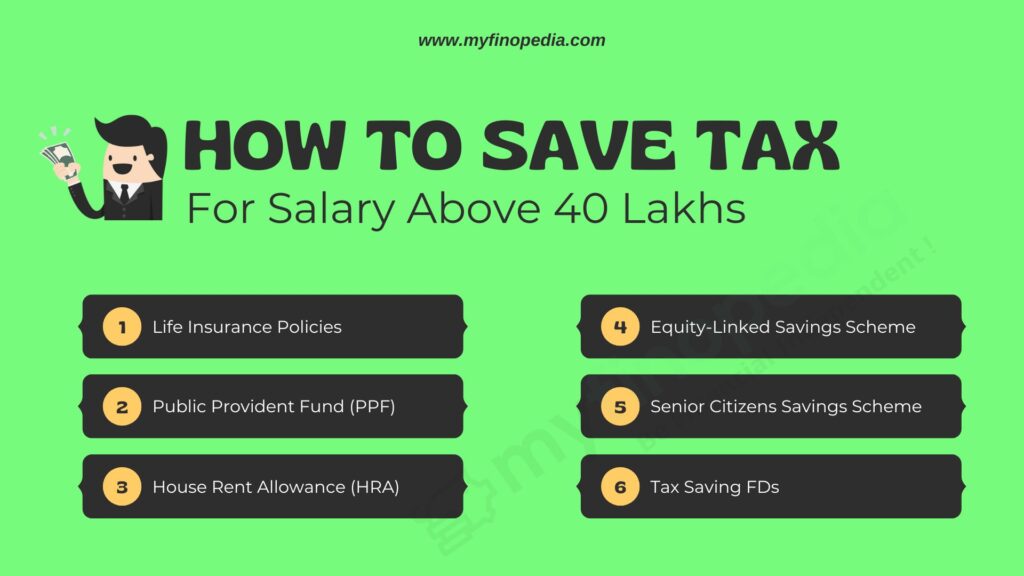It’s assumed that you haven’t been handling your taxes properly if you believe you’ve been paying a significant portion of your income in taxes. There are various strategies for lowering your tax burden that offer tax deductions and other benefits. Section 80C, Section 80CCC, and Section 80CCD deductions are some of the most practical strategies to apply in this FY 2023. A person may be qualified for various deductions if they invest in the things listed in Sections 80C– 80CCC : –
| TOTAL INCOME | INCOME TAX RATE SLAB FOR 2022-2023 |
| A maximum 2,50,000 lakhs | Exempt |
| 2,50,000 – 5,00,000 | 5% |
| 5,00,000 – 7,50,000 | 10% |
| 7,50,000 – 10,00,000 | 15% |
| 10,00,000 – 12,50,000 | 20% |
| 12,50,000 – 15,00,000 | 25% |
| Above 15,00,000 | 30% |
Method 1:- Financial products including PPF Accounts, Pension Plans, Life Insurance Policies, NSCs (National Savings Certificates), 5 Year Tax Saving Fixed Deposits, and others are often invested in by people. Under any one of the three clauses of Section 80CCD, citizens are only permitted to deduct a maximum of Rs. 1,50,000.
Method 2:- As the expense of medical treatment grows, everyone now requires health insurance because it assists with your emergency medical bills. For instance, if you pay health insurance premiums, you can deduct the cost of your standard health insurance as well as the premiums for top-up plans and critical illness insurance under section 80D, which enables you to save up to Rs. 15,000–20,000. According to Section 80D of the Income Tax Act of 1961, the total amount of health insurance premiums paid during a fiscal year is eligible for a tax deduction. Your tax deductions range from Rs. Twenty-five thousand to Rs. Fifty-thousand if you are a HUF (Hindu United Families) member and under sixty years old (formerly Rs. thirty thousand).
Method 3:- Section 80GG allows those who are renting a home to deduct certain expenses. However, only people who are not salaried and who do not get an employer-provided House Rent Allowance (HRA) are qualified for this tax deduction. By enabling them to deduct HRA from their taxes, people may save money. If a person pays more than Rs. 1 lakh in total rent per year, they must provide documentation, such as the owner of the home’s PAN card or a lease agreement.
Method 4:- A further deduction of Rs. 50,000 may be claimed by anybody who makes contributions to the National Pension Scheme pursuant to Section 80CCD.
Method 5:- A long-term aim is being created with the aid of the Provident Fund (PF). Tax deductions for PF deposits under Section 80C are permitted up to Rs. 1,50,000.
Method 6:- Under section 80C, tax-saving fixed deposits offer tax deductions on investments up to Rs. 1,50,000. A desirable sum can be gained with favorable interest rates. The deposit has a 5-year lock attached to it.
Method 7:- The interest paid on student loans is still exempt from taxes for the borrower, the spouse, and the children under Section 80E. The amount of interest paid, not the principle amount, may be deducted by an individual.
Method 8:- Hindu undivided families (HUFs), Sikhs, and Jain families all have this status. For them, section 10 (2) makes it plain that the money received from these families is free from tax obligations. In accordance with this plan, an individual is permitted to deduct tax from their take-home pay and deposit the funds in a HUF account. As a result, the amount paid will not be subject to tax.
Method 9:- You can choose an equity-linked savings plan (ELSS) through mutual funds to qualify for section 80C deductions up to Rs. 1,50,000. ELSS is the most effective entry point to equity because it combines equities with tax savings. Accordingly, your money rises when the stock market increases thanks to the tax savings. In ELSS, profits are therefore substantial. The 3-year lock-in term is also the shortest of any option.
Method 10:- Taxes on long-term capital gains can be reduced for taxpayers if they sell a long-term capital asset and subsequently reinvest the proceeds in specific financial instruments. Assets that the taxpayer has owned for more than three years are considered long-term capital assets.
Method 11:- Those who pay taxes have a right to LTA that isn’t subject to taxation from their employers. They must go to any location in India during their vacation time to qualify for it, which may be claimed twice in a four-year period. Taxpayers who correctly arrange their income, assets, expenditure, and taxes may be able to save a significant amount of money. To avoid paying more in taxes, it is strongly advised against doing so.
Method 12:- To encourage people to invest in mutual funds and equity shares, the Indian government has exempted from taxes any long-term gains from the sale of equity shares. The only people exempt from paying the tax are those who have owned such shares for more than a year.
Method 13:- Only senior citizens, defined as those over 60 or who choose to retire at age 55, are eligible for the Senior Citizens Savings Scheme (SCSS). The highest SCSS investment eligible for tax exemption under Section 80Cis Rs. 1,50,000.






